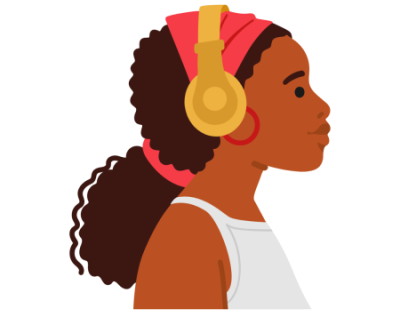
Autism Awareness Month, also known as Autism Acceptance Month, is a month when many companies put forth campaigns to highlight individuals with autism. But what does autism even look like in people?
To be clear, autism has no “one size fits all” appearance.
Autism is a lifelong neurodevelopmental disability that can manifest in different ways through people of all ages, races, genders, sexual orientations, body types, and occupations. Sometimes autism can be accompanied by other comorbidities, (intellectual disability, dyspraxia, chronic illness, etc.), and sometimes not. Below, you’ll find some statistics from the CDC about autism:
- About 1 in 36 children, or 2.8% of children, are diagnosed with autism (not including people who are late diagnosed)
- Of that percentage, boys were diagnosed with autism nearly 4 times more than girls
- Autism is prevalent across all racial identities
- Although this number varies, one study found about 38% percent of autistic children aged 8 are also classified as having an intellectual disability
You may have heard that autism is a spectrum, but what does that really mean? There's a common misconception that the autism spectrum is a straightforward line stretching from "not autistic" to "very autistic," but in reality, autism manifests differently in each individual who has it. People with autism display a range of abilities across the traits outlined in the DSM (a classification system published by the American Psychiatric Association that provides standardized criteria for the diagnosis/classification of mental health disorders). Nonetheless, here are some traits that tend to be noticeable in autistic individuals:
- Repeated behaviors such as stimming (self-stimulatory behavior that can include hand-flapping, rocking back and forth, spinning, tapping, repeating words/phrases, and more)
- Not understanding social rules or norms
- Intense interest in certain subjects or activities
- Delays in communication
- Sensory aversion or sensory-seeking activities
If you relate to any of those traits above, does that automatically mean you have autism? Not necessarily. To be diagnosed with autism, children or adults need to meet a certain criteria given by the DSM by a qualified professional.
Because autism is sometimes hard to recognize, it’s important to be compassionate and patient towards everyone. Autism Awareness month is a great time to get more educated on neurodiversity. Chances are one of your friends, coworkers, or family members is autistic and you don’t even know about it!
At The Village, we have a variety of providers that specialize in autism and can provide support to individuals with autism and their families. Mental health support is especially important because autistic people are more likely to experience mental health difficulties and higher rates of suicide than the general population, but can benefit greatly from a variety of therapies aimed to make life easier for them. At the Village, we are here for you!